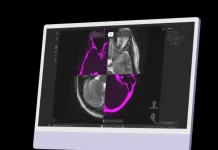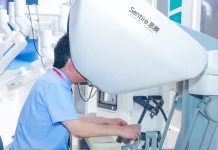
The FDA has cleared a next-generation system to continuously monitor patients’ blood pressure while they’re undergoing surgery without the use of inflatable cuffs or invasive arterial catheters.
Attached wirelessly around the patient’s finger, Caretaker Medical’s VitalStream device aims to catch the changes in blood pressure that may occur during an operation and alert surgeons to any sudden drops or deteriorations that may complicate the patient’s recovery.
By using a low-pressure finger sensor to measure each heartbeat, the noninvasive system can deliver ICU-grade patient tracking in a variety of settings with little training and integrate with a hospital’s monitoring and records systems.
“This is our fourth FDA clearance, expanding our wireless platform and enhancing our core continuous waveform technology and artificial intelligence algorithms,” Caretaker Medical CEO Jeff Pompeo said in a statement.
The VitalStream platform improves upon the company’s previously cleared Caretaker4 wireless patient monitor by adding automated early warning scores and streamlined calibration and setup, in addition to a smaller, wearable form factor.
According to Caretaker, its hardware has been used in operating rooms, emergency rooms and intensive care units as well as COVID-19 wards, sleep labs and in biopharma clinical trials. The VitalStream system will be immediately launched in the U.S. before the Charlottesville, Virginia-based company plans to bring the device to Europe and Asia next year.
Caretaker is not the only company looking to bring data from a patient’s fingertips to their doctors. Masimo’s single-use Rainbow SuperSensor received a CE Mark in Europe earlier this month for a wearable device that measures 12 bloodborne vital signs at once.
That includes oxygen saturation, hemoglobin count, pulse and respiration rate—all collected simultaneously by a series of LED lights stuck to a finger—but not blood pressure, like Caretaker’s device.
And earlier this year, Edwards Lifesciences received the FDA’s blessing to expand the use of its hypotension-predicting AI software—which delivers a patient score based on their blood pressure every 20 seconds—allowing it to be used with finger-worn cuffs in addition to the previously cleared arterial lines.
Are you hiring?
Submit Vacancy






